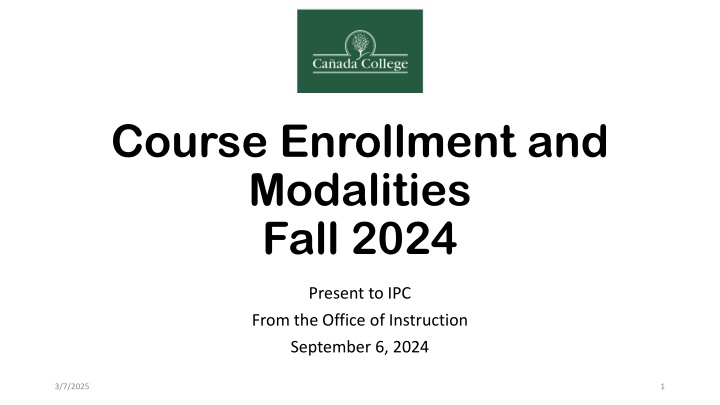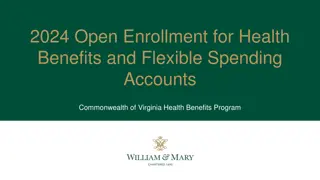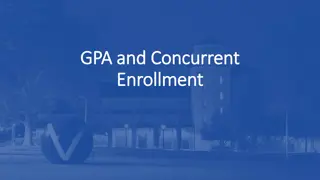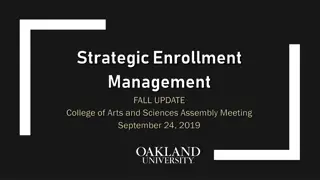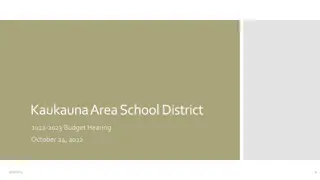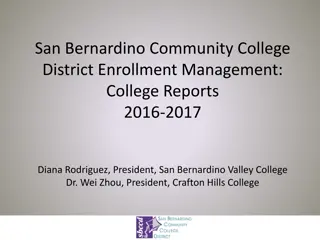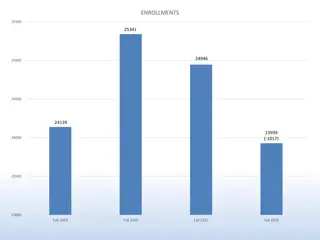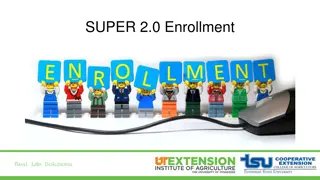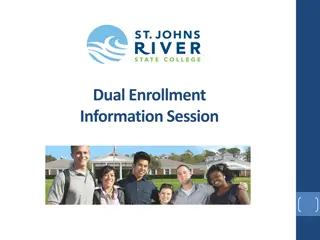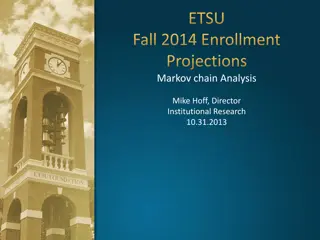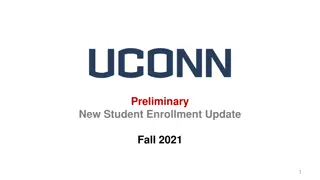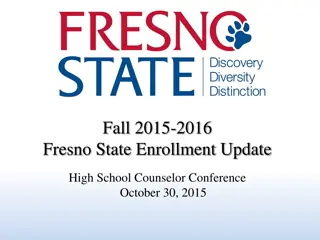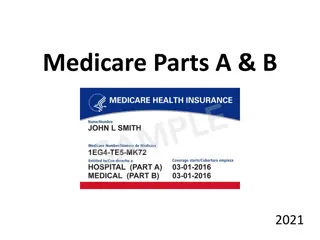Effective Management of Enrollment Modalities Fall 2024
This report delves into the effective management of enrollment modalities for Fall 2024, focusing on creating student-first course schedules, offering key courses in multiple modalities, and exceeding college goals. It provides insights into student-first scheduling approaches, diverse course modalities, and aligning schedules to minimize conflicts, ultimately promoting student success and program completion within expected timeframes.
Download Presentation

Please find below an Image/Link to download the presentation.
The content on the website is provided AS IS for your information and personal use only. It may not be sold, licensed, or shared on other websites without obtaining consent from the author.If you encounter any issues during the download, it is possible that the publisher has removed the file from their server.
You are allowed to download the files provided on this website for personal or commercial use, subject to the condition that they are used lawfully. All files are the property of their respective owners.
The content on the website is provided AS IS for your information and personal use only. It may not be sold, licensed, or shared on other websites without obtaining consent from the author.
E N D
Presentation Transcript
Course Enrollment and Modalities Fall 2024 Present to IPC From the Office of Instruction September 6, 2024 3/7/2025 1
EMP 1.3 Create a student-first course schedule EMP 4.12 Offer key courses in multiple modalities A student-first course schedule is the outcome of a thoughtful and collaborative process that prioritizes student success, minimizes disruptions, aligns programs, and balances faculty workload. Student-first Scheduling and Modalities: Offering diverse course modalities, including face-to-face, hybrid, asynchronous online, synchronous online, and multi-modalities, to cater to various learning preferences. Considering the day of the week, time of day, and location to accommodate student needs and preferences. We ensure course schedules are aligned to minimize conflicts, enabling students to plan and complete their educational goals efficiently. ACCJC Standard 2.5: The institution holds itself accountable for students success by scheduling courses in a manner that ensures degree and certificate programs can be completed in the expected period of time. ACCJC Standard 2.6:The institution uses delivery modes and teaching methodologies that meet student and curricular needs and promote equitable student learning and achievement. 3/7/2025 2
Exceeded College Goals Exceeded College Goals Course Enrollment Headcount Load # of Section (# of CRN) Fill Rate 80% FTES FTEF College Goal 11,000 5,337 450 Fall 2024 (Census Day, 9/3/2024) 12,659 6,552 76% 1530 107.2 429 490 (627) 222 (302) 138 (155) 91 (109) 39 (61) F2F 5,168 74% 662 49 404 Online Asynchronous 4,379 83% 461 27.5 503 Hybrid 2,067 75% 290 23.4 372 Online Synchronous 1,045 72% 117 7.2 486 3/7/2025 3
Effective Management of Enrollment Effective Management of Enrollment by Modalities at Census Day by Modalities at Census Day Fall 2024 Fall 2024 Sections by Modality & Fill Rate (CRN=627) Fall 2024 Enrollment by Modality (N=12,659) Online Asynch 25% Fill Rate 82% Online Asynch 34% Fill Rate 74% F2F 42% F2F 48% Online Synch 10% Online Synch 7% Fill Rate 72% Hybrid 17% Hybrid 17% Fill Rate 75% 3/7/2025 4
Effective Management of Enrollment Effective Management of Enrollment by Modalities at Census Day by Modalities at Census Day Fall 2023 Fall 2023 Section by Modality & Fill Rate (N=596 CRN) Fall 2023 Enrollment by Modality (N=11,039) Online Async 26% F2F 31% 69% Fill Rate Online Async 39% F2F 42% 84% Fill Rate Online Sync 14% 72% Fill Rate Online Sync 13% Hybrid 17% Hybrid 18% 76% Fill Rate 3/7/2025 5
Point in Time Comparison and Course Success Metric Fall 2022 Fall 2023 Fall 2024 % change FA2024-FA2023 Enrollments 10,570 11,974 12,653 +5.6% Headcount 5,337 6,159 6,552 +6% Headcount (First-Time) 825 905 947 +4.6% Headcount (Int'l) 69 80 109 +36% Concurrent K-12 Student 498 549 639 +16% Continuing Student 2,970 3,945 3,997 1% Enrollments (Evening) 508 703 991 +41% 3/7/2025 6
Enrollment Comparison: Fall 2019 (pre-pandemic) and Fall 2024 Enrollment Comparison: Fall 2022, Fall 2023, & Fall 2024 (post-pandemic) Fall 2024 3/7/2025 7
Six Semesters Enrollment TrendFall 2019 through Fall 2024 Fall 2024 3/7/2025 8
Questions and Thoughts 3/7/2025 9
